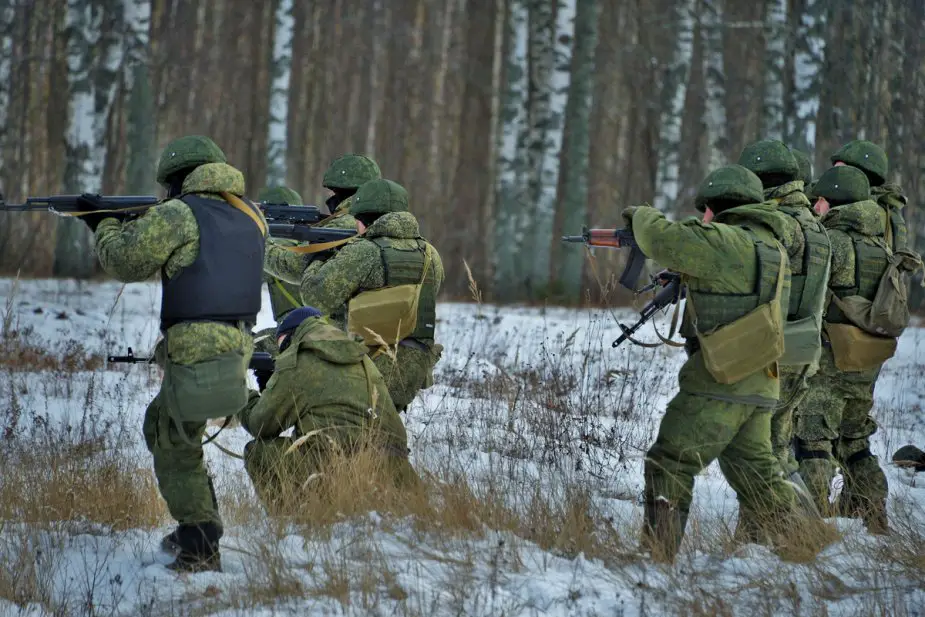- Army
- Conflicts in the world
- Israel - Iran conflict 2025
- Pakistan - India Conflict 2025
- Russia Ukraine War 2022
- Libya conflict day by day
- HAMAS - Israel War 2023
- Operation Serval in Mali French Army
- Sangaris operation Central African Republic
- Sangaris opération militaire République Centreafrique
- Ukraine - Russia conflict
- Syria conflict news
- Defence & Security Industry Technology
- Armies in the world
- Analysis Defense and Security Industry
- Conflicts in the world
- Navy
- Air
Russia Enlists 30,000 Soldiers Monthly for Ukraine Conflict
Vadym Skibitskyi, deputy chief major general of Ukraine's main military intelligence arm, has recently reported that Russia is enlisting approximately 30,000 soldiers monthly. Although this recruitment of soldiers each month suffices to compensate for frontline losses, Russia would have to initiate a larger-scale mobilization to build a more substantial strategic reserve.
Follow Army Recognition on Google News at this link

Mobilized personnel undergo combat training in Kostroma region (Russian MoD)
This rate of recruitment, which averages 1,000 to 1,100 people per day, is in response to the significant casualties Russia has sustained in the ongoing Ukraine conflict. This information is in line with the observations made by the Institute for the Study of War (ISW), which corroborates the scale of Russia's efforts to maintain operational rotations in Ukraine.
Skibitskyi's statements shed light on the high-casualty approach of the Russian military, particularly in strategic urban battles such as those in Bakhmut and Avdiivka. Analysts have observed the continuation of these tactics across various fronts, notably the United States' report in October about Russia employing "human wave" tactics. These involve deploying underprepared and poorly equipped troops into high-intensity combat scenarios, often resulting in significant losses.
Financial incentives have been identified by Skibitskyi as a key motivator driving Russians to join the army, especially in economically challenged regions with limited employment opportunities. He points out that the current recruitment levels are adequate to replace frontline losses but suggests that Russia may require more extensive mobilization to build a substantial strategic reserve. This speculation is tempered by considerations of the upcoming elections and internal pressures, including demands from the families of Russian soldiers for their safe return.
Russia, while enduring substantial losses, plans to recruit 400,000 new contract soldiers in 2024 to bolster its forces, despite existing doubts about the accuracy of its official personnel figures and recruitment capabilities. Russia's potential recruitment pool is diminishing, with decreasing patriotic motivation and rising civilian sector salaries making military service less appealing. This is further strained by a low unemployment rate and labor shortages, impacting various sectors including Russian Railways, which competes with the military for skilled workers. Despite these issues, Russia's deeper manpower reserves and tolerance for self-inflicted hardships suggest its ability to endure a prolonged conflict, albeit with logistical and equipment quality challenges, such as reliance on lower-grade North Korean ammunition.
In their defense efforts against the Russian invasion, Ukraine has aimed to mobilize up to 500,000 personnel, a goal hindered by several challenges including high casualty rates, labor shortages, and reliance on international aid, particularly from the US and EU. Internal tensions, including disputes between the president and the chief of staff, and dissatisfaction among soldiers over issues like enlistment evasion and demands for demobilization after extended service, further complicate this effort. Additionally, corruption in recruitment offices, where some avoid mobilization through monetary exchanges, exacerbates these challenges. The impact of these losses is magnified by Ukraine's smaller population and military size compared to Russia, limiting the human capital available for the conflict.
News Russia Ukraine War


























